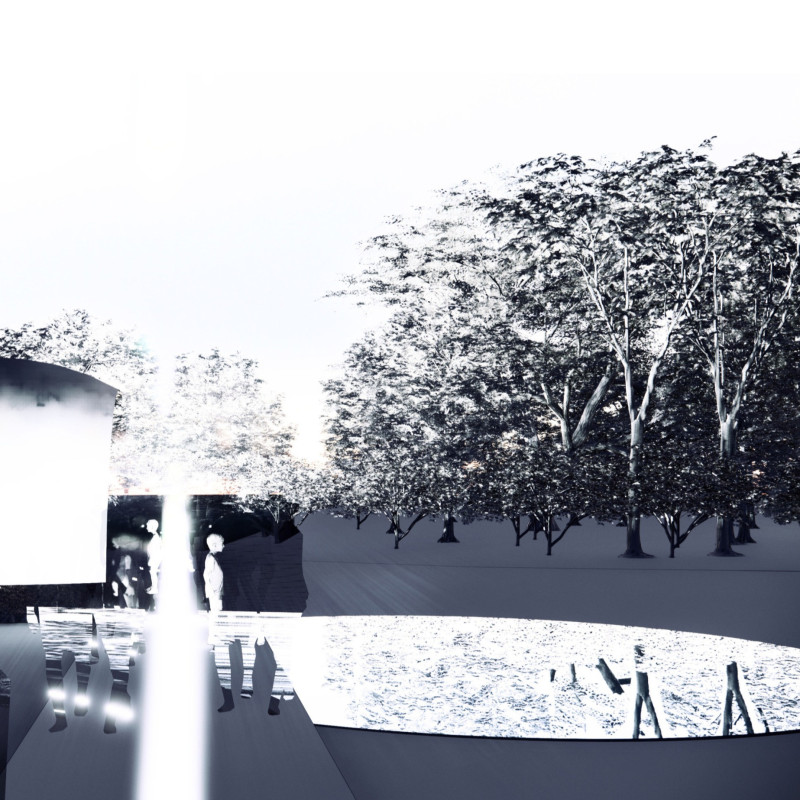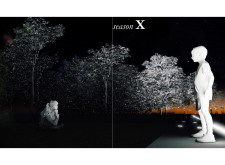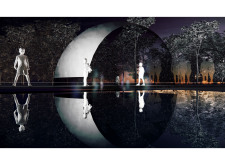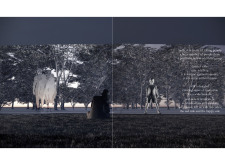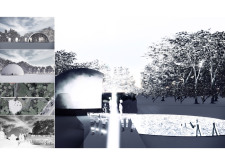5 key facts about this project
The architectural composition incorporates significant sculptural pieces representing human figures, strategically placed to evoke emotional responses related to loss and remembrance. Reflective water features are utilized to enhance the experience, offering visitors an opportunity to engage with their surroundings personally. The space is designed to facilitate movement, guiding visitors through various experiences that reflect the complexity of the themes being presented.
Unique Aspects of the Design
A distinguishing feature of this project is the hybridization of art and architecture, creating a seamless integration that reinforces the thematic goals. The human-like sculptures are crafted from a white material, creating stark visual contrasts against the natural landscape. These figures are intentionally positioned to facilitate interaction and contemplation, drawing attention to their narratives and inviting visitors to reflect on broader human experiences.
The use of water features in the design not only introduces a sensory element but also symbolizes the continuity of memory. The calm surfaces of the reflective pools promote a meditative atmosphere, while the surrounding landscape complements the architectural forms. The choice of trees adds a layer of depth to the environment, providing shelter and framing views that layer the architectural narrative with natural beauty.
Functional Elements and Spatial Experience
The project is designed with specific functional elements that promote engagement with its overarching themes. Walkways and pathways guide visitors through the site, encouraging exploration and discovery. The interplay between open areas and intimate spaces creates a dynamic experience, allowing for both personal reflection and shared moments in groups.
Architectural elements such as arches and circular forms contribute to the overall cohesiveness of the design, symbolizing unity and continuity within the context of historical narratives. The materials selected—natural earth, grasses, and reflective surfaces—contribute to the environmental integration, ensuring the architecture harmonizes with its surroundings while reinforcing the memorial’s significance.
For those interested in deepening their understanding of this project, the exploration of architectural plans, sections, and designs is encouraged. These elements provide insight into the technical and conceptual approaches that inform the architecture, illustrating how this project represents a thoughtfully considered response to complex historical themes.


